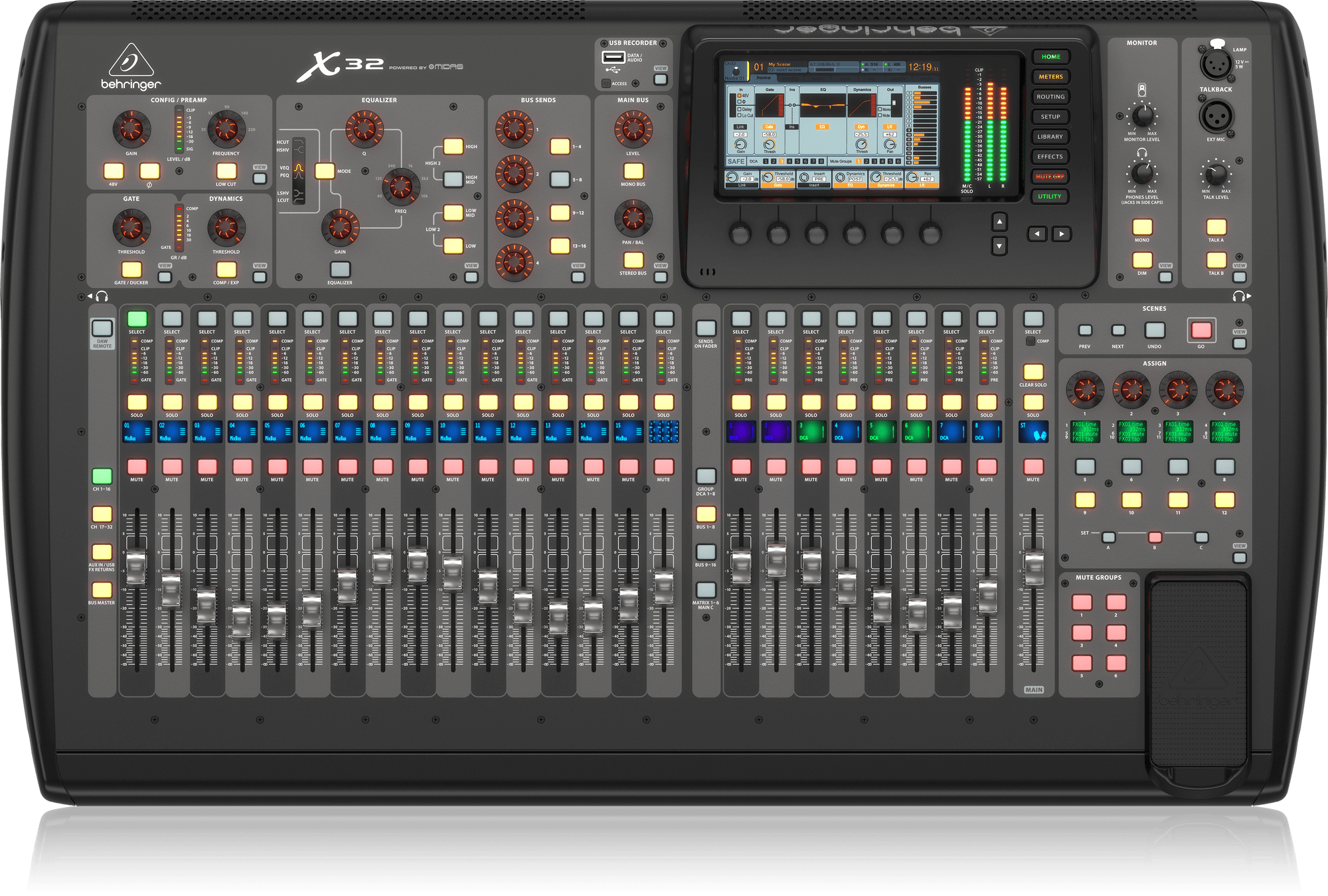
Which meant some other control surface niceties have had to go.
#Behringer x32 review full size#
In the quest to ‘Compact-ify’ the X32, Behringer engineers decided that in this rendition of the product the full size 800 x 480 pixel TFT screen and six rotary encoders were to be kept. MIDI I/O rounds out the rear panel on the X32 Compact. An Ultranet port can also be found for use with Behringer’s Powerplay 16 personal monitoring system. It also transmits HUI and Mackie Control data so you can use the group faders to control your DAW (this card comes pre-installed in the X32 Compact which is a bonus!). At the time of writing the only card available is Behringer’s own XUF FireWire/USB audio interface card providing up to 32 channels of I/O and MIDI over either USB 2.0 or Firewire. Digital output is by way of a single AES/EBU connection whilst this is far from comprehensive there is a card slot that promises further expansion options.
#Behringer x32 review software#
Remote control over Ethernet or USB is possible with Behringer’s X32 Edit software on a laptop (PC or Mac) these ports can also be connected to a wireless router and control of the X32 Compact can be run from an iPad. Stereo monitor outputs are also supplied for studio use and two headphone outputs are available on either side of the console positioned in the carry handles. Also worthy of note is that you can only assign inputs and outputs in blocks of eight, so the X32 family of consoles is not as flexible as some other, albeit more expensive, digital consoles in this regard.Īn onboard mic is provided for talkback, as well as the option to connect an external one. Two AES-50 ports are retained for further expansion through Behringer’s S-16 digital stage boxes (16-in/8-out) although, as with the X32, you are limited to a maximum of 40 inputs by the DSP processor. The remainder of the X32 Compact I/O is identical to its bigger brother. Referred to as Aux I/O in Behringer parlance, they can be used for just about anything from analogue inserts to aux sends or as local input channels for playback from sources such as CD or iPod. Six extra line level inputs and outputs are available on TRS, one pair are duplicated on RCA for convenience. These XLR inputs are 12kΩ, so will accept signal ranging from mic to line level.

On offer here are 16 inputs and eight outputs on XLRs. I/O-wise, the Compact is essentially half the X32. The first four slots can be used as send-return effects whereas the last four must be used as inserts.

The eight stereo effects processors emulate units from industry stalwarts like Lexicon and Roland, there’s even an onboard guitar amp simulator. All 25 mix buses have an expanded six-band parametric EQ and compressor/expander sections. The effects returns lose both the compressor and EQ section.
#Behringer x32 review plus#
Input channels 1-32 feature four-band parametric EQ plus a low cut filter, gate and compressor/expander, the six aux inputs are the same minus the compressor. The internal processing of the X32 Compact is identical to its big brother and, in short, comprises a 40-bit DSP engine with 40 input channels (32 input channels, six aux and a stereo USB input) and 25 mix buses (16 internal, six matrix and LCR). As I recently covered the X32 in detail in AudioTechnology Issue 91 this review will focus on the general feature set and on the X32 Compact changes. Nothing has changed internally, just the control surface and I/O configuration has. The Compact is exactly that, a more compact X32 aimed at people that have less space and I/O needs. SHRINKING FEELINGīased on the same 40-input channel, 25-bus digital mix architecture as the X32. The first cab off the rank is the X32 Compact. The expansion leverages the effort Behringer put into the X32 system to reach into all segments of the market, from live and home studio recording to all levels of installation. Beginning with the standard X32 and progressively shrinking down through the models: Compact, Producer, Rack and finally the Core which is a single rack unit device with very limited hardware controls, designed to be operated via an iPad. Now through the settling dust Behringer has emerged with the expanded X32 line of consoles. Its price to performance ratio had the opposition scrambling.

The X32 caused quite a stir when it was released over 12 months ago. Plus, personal monitoring just got a whole lot more affordable. Behringer has stretched out the X32 concept by cutting it to size and letting you expand as needed.


 0 kommentar(er)
0 kommentar(er)
